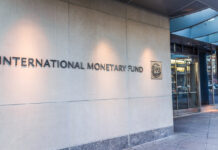By Filipe R. Campante & Davin Chor
The recent uprisings in the Arab World carry a broader lesson, highlighting the importance of sustaining an economy that provides sufficient job opportunities for an increasingly educated and skilled middle class.
Since late 2010, the world has witnessed a remarkable groundswell of political change in Tunisia, Egypt, Libya, Yemen, Syria, and other Arab countries. It has already swept aside several regimes once thought unassailable, while shaking up the existing political order in others. This wave of change – popularly referred to as the “Arab Spring” – has certainly prompted much thinking. What were the sources of underlying discontent in these states? Why were these movements able to gain sufficient traction within the span of a few weeks, leading ultimately to the overthrow of strongmen who had ruled for decades? These are deep questions that have absorbed the attention of policy practitioners and academics alike, who have sought to extract broader lessons from the Arab Spring to better understand the underpinnings of regime stability
Those who are interested in these questions could do worse than read a recently published book entitled “Revolution 2.0”, by the Egyptian Google executive Wael Ghonim.1 In this autobiographical account, Ghonim describes in extraordinary detail the role that he and other activists played in organizing the massive street protests that eventually triggered the downfall of Egypt’s then-President Hosni Mubarak. In doing so, Ghonim vividly brings to life several elements that have drawn attention in the ongoing effort to make sense of the Arab Spring, such as the background of the leading activists who featured so prominently in rallying the public to the streets. These were young, tech-savvy individuals adept in their use of social media, who often had prior exposure to living and working abroad. These factors certainly played a pivotal role in enabling the street protests to gain such momentum and energy in a short span of time.
Economic opportunities and the skilled middle class
The attentive reader of the book will nevertheless notice the unmistakable manifestations of deeper structural forces that were well in place before the start of the Arab Spring, and to which we have sought to draw attention in our own work. In a particularly telling passage, Wael Ghonim tells us about his father, who spent almost all of his working life as a doctor in Saudi Arabia, in spite of the extended separation from his family, in large part because his salary was apparently twenty times the amount he would have received had he kept working in a public hospital back home in Egypt. As it turns out, Ghonim’s father was not an isolated case. Research on how immigrants in the United States have fared suggests that skilled workers from several of the countries most affected by the Arab Spring (such as Egypt and Yemen) did indeed command substantial wage premiums from working in the US labor market when compared against similarly skilled workers who remained in their home countries – up to ten times as high, which is in fact quite above the average premium for skilled immigrants from other countries.2 On top of this systematic evidence, one can add further anecdotes such as the widespread belief (since found to be incorrect) that Mohamed Bouazizi – the Tunisian fruit vendor whose self-immolation marked the birth of the Arab Spring – was a disgruntled university graduate.3 Putting these pieces together, one has a clear indication of the inability of many Arab states to provide sufficient economic opportunities to meet the aspirations of an increasingly educated populace.
This inability has been, in our view, a decisive element in fueling the combustible mix that eventually ignited the Arab World. Social scientists such as James Davies and the late Samuel Huntington have long argued that in developing countries, there has often been a mismatch between the skills accumulated through public investment in education on the one hand, and the available economic opportunities on the other. This mismatch, according to this line of thought, ultimately contributes to political instability, as a result of the frustrated expectations that build up in the workforce.4
Does this provide an accurate description of the experience of the Arab World? It may come as a bit of a surprise in light of the perception of stagnation surrounding the region, but many Arab countries did indeed invest substantially in expanding access to education over the past few decades. As we documented in a recently published piece in the Journal of Economic Perspectives, Arab countries actually ranked among the highest in the world when it came to the increase seen in the average years of schooling in the general population between 1980 and 2010, occupying eight of the top twenty spots. What was striking was that many of these same countries also suffered from economic stagnation and a dearth of labor market opportunities, particularly for workers with skill profiles akin to Wael Ghonim’s father. The list of countries that experienced this combination of large educational gains, but poor macroeconomic performance, all but reads as a who’s who list of epicenters of the Arab Spring turmoil, including Egypt, Tunisia, Yemen, Libya, Jordan, and Morocco. (One can also add non-Arab Iran to this list, which itself has also witnessed recent explosions of political protest.) In contrast, countries like the UAE, Qatar, or Kuwait, which have had considerably more vibrant economies and better labor market conditions, have escaped largely unscathed from the upheaval of the Arab Spring.5
It turns out that this link between poor economic prospects, education, and political protest actually holds up to considerable further scrutiny, and well beyond the specific context of the Arab World. In related work, we have examined data at the level of individuals coming from a broad spectrum of countries, to try to understand what determines patterns of political participation at this detailed level. In this line of research, it is a well-established fact that more educated individuals tend to report a greater affinity to engage in political activities of all forms, be it in attending rallies, following political news, or voting. What we have found over and above this basic fact is that relatively educated individuals who nevertheless fared poorly in their labor market outcomes tended to display a greater propensity to engage in political activities of a protest nature, such as participating in demonstrations. In particular, this finding is present even after we take into account the possible influence of age, to control for the hypothesis that younger people are disproportionately more inclined to protest.
What is more, we have also found consistent patterns when comparing more aggregate data across countries. Countries which invested substantially in education, but which had subpar economic records, were subsequently more prone to greater regime instability, in that they were more likely to witness a change in government or political leadership. Again, this pattern holds even after accounting for the demographic structure of the country, suggesting that there are deeper causes of this instability beyond a simple “youth revolution” hypothesis. Instead, hard-headed economic circumstances and how they affect different groups in society, particularly the relatively skilled, appear to matter for explaining the impetus toward political change.6
The “opportunity cost” of political participation
What drives this connection? Mounting grievances stemming from the unfulfilled expectations of unemployed or underemployed university graduates are certainly a part of the story. The survey evidence in Egypt, for instance, as gathered by the International Republican Institute shortly after the fall of Mubarak, shows that complaints about low living standards and the lack of jobs were paramount in the minds of those who claimed to have taken part in the Tahrir Square demonstrations.7
However, we would argue that there are other more subtle, but no less important, forces at play. As much as the skills acquired in secondary and higher education make individuals more effective and engaged in political action, they naturally make them more effective in activities that are rewarded in the labor market as well. A vibrant labor market with plentiful opportunities for highly skilled individuals would naturally spur them to spend more time, effort, and energy chasing those economic opportunities. Conversely, in a stagnant economy, it would be less costly to instead devote that same time, effort, and energy towards political activities. In other words, the “opportunity cost” of engaging in political action is reduced when economic circumstances are unfavorable.
Quite interestingly, the data show that this interaction between schooling and economic circumstances is particularly important in explaining patterns of individual participation in political activities such as demonstrations, strikes, or the occupation of buildings. This is much less so, in contrast, when it comes to activities such as signing petitions, or even voting, which scholars of political participation such as Sidney Verba have described as being relatively less demanding in terms of time, commitment, and effort.8 We would thus have expected these latter activities to be less affected by the “opportunity cost” logic. In sum, the fact that weak economic conditions seem to raise the propensity of highly educated individuals to engage specifically in effort-intensive political activities suggests that the relative costs of those activities constitute an important driving force behind our findings.
Broader lessons from the Arab Spring
Needless to say, our intention is not to discount the roles played by the many political, demographic, and socio-cultural forces that have been emphasized elsewhere in other accounts of the Arab Spring. Even so, what general lessons can we take away from this interplay between education and economic circumstances that we have highlighted? Does our logic have implications beyond the specific context of the Arab World?
First of all, this interplay presents incumbent governments in developing countries with a tricky set of issues to navigate. Education is clearly a necessary precursor for modern industrial growth, and it is unsurprising that many developing countries have invested heavily in increasing educational achievement over the years – even though, once we account for quality, those increases have oftentimes been less impressive than the raw numbers suggest. But what the Arab Spring illustrates is that too much education without appropriate jobs being created in lockstep in the economy can be a formula for instability. These conditions create an expanding middle class that is not only disillusioned with its own economic prospects, but also more demanding of government accountability and more effective in their political expression, who feel that they have comparatively little to lose in terms of labor market earnings for their political engagement.
This tightrope act is even more dizzying, and the safety net below more frayed, for autocratic regimes. Even the most rapacious of dictators have some incentive to invest in education, in order to foster economic growth and generate the economic rents that they intend to appropriate for themselves. But they also have a lot to fear from it. The very fact that, in an autocratic context, such an educated middle class would be disenfranchised from having political voice through meaningful institutional channels may eventually make political protest a more significant outlet for that disillusion. For a period of time, “exit” (to use Albert Hirschman’s classic dichotomy) can be a means to diffuse the unhappiness of this contingent of potential protestors.9 This phenomenon is aptly reflected in the Egyptian quip, paraphrased by Wael Ghonim: “Egyptians’ future is in Canada” (p.8). However, as that contingent grows with the swelling ranks of the educated, the political system would ultimately come under pressure from within. It turns out that when examining the countries in the world that experienced this combination of increasing levels of education and sluggish labor markets, the Middle Eastern countries were in fact among the least democratic in this group.
By the same token, many of these autocratic regimes have been built on sclerotic economies with a heavy and inefficient state involvement, often designed so that a small ruling elite would benefit from the rents that are thus generated.10 This is clearly far from a recipe for widespread economic opportunity. As a result, these regimes are likely to face a stark choice between the kinds of reforms that are needed to accommodate the up-and-coming middle class and the status quo policies that would maintain the interests of their narrow base of supporters. Again, as rising education levels expand the ranks of the middle class, this tradeoff would become ever more complicated to navigate.
These general lessons are not limited to countries with sclerotic economies. Many observers have already started to note that in China, there has recently been some deterioration in the labor market for university graduates, due in part to a significant increase in the supply of college degree holders.11 Such trends perhaps also signal a degree of mismatch between the skills required by firms and what has been imparted by the system of higher education. It is not that surprising, against this backdrop, that the Chinese government has proved to be extremely wary of any whiff of a “spring” that might blow from the Middle East, and taken active steps to prevent similar developments. If our interpretation is correct, however, in the long run, this might be no substitute for a continuing pace and profile of economic growth that keeps up with increasing levels of education.
Last but not least, we may also ask what the evidence has to say about the prospects of the Arab World looking ahead. Of interest, we have found some circumstantial evidence in our own work that the combination of increased schooling and poor economic performance (and the political instability that is associated with it) has been more often than not followed by moves toward democratization. This evidence is at this point not sufficient to warrant any bold predictions, so we will have to wait and see what will come of the ongoing transitions in the many countries swept up by the recent winds of change. That said, political decision-makers would be wise to pay heed to the connections between education, economic opportunities, and political protest as they shape these developments going forward into the future.
About the Authors
Filipe R. Campante is an Associate Professor of Public Policy at the Harvard Kennedy School.
Davin Chor is an Assistant Professor of Economics at the Singapore Management University. Both received their PhDs in economics from Harvard University in 2007. Their joint work has focused on understanding more deeply the socio-economic forces that govern patterns of political participation, with a specific focus on the role played by schooling.
References
1. Ghonim, Wael, (2012), Revolution 2.0, New York, USA: Houghton Mifflin Harcourt.
2. Clemens, Michael A., Claudio E. Montenegro, and Lant Pritchett, (2009), “The Place Premium: Wage Differences for Identical Workers across the US Border,” Harvard Kennedy School Faculty Research Working Paper RWP09-004.
3. Fahim, Kareem, (2011), “Slap to Man’s Pride Set Off Tumult in Tunisia,” New York Times, 21 January.
4. Huntington, Samuel P., (1968), Political Order in Changing Societies, New Haven, CT: Yale University Press; and: Davies, James, (1962), “Toward a Theory of Revolution,” American Sociological Review 27(1): 5–19.
5. Campante, Filipe R., and Davin Chor, (2012), “Why was the Arab World Poised for Revolution? Schooling, Economic Opportunities, and the Arab Spring,” Journal of Economic Perspectives 26(2): 167-188.
6. Campante, Filipe R., and Davin Chor, (2011), “‘The People Want the Fall of the Regime’: Schooling, Political Protest, and the Economy,” Harvard Kennedy School Faculty Research Working Paper RWP11-018.
7. International Republican Institute, (2011), “Egyptian Public Opinion Survey, April 14–April 27,2011,”http://www.iri.org/sites/default/files/2011%20June%205%20Survey%20of%20Egyptian%20Public%20 Opinion,%20April%2014-27,%202011_0.pdf.
8. See for example: Verba, Sidney, and Norman H. Nie, (1987), Participation in America: Political Democracy and Social Equality, Chicago, IL: University of Chicago Press. 9. Hirschman, Albert O., (1970), Exit, Voice, and Loyalty, USA: Harvard University Press.
10. Ammous, Saifedean, and Edmund Phelps, (2011), “Tunisians Set Off on the Road from Serfdom,” Financial Times, January 24.
11. See for example: Jacobs, Andrew, (2010), “China’s Army of Graduates Struggles for Jobs,” New York Times, December 11.




































































